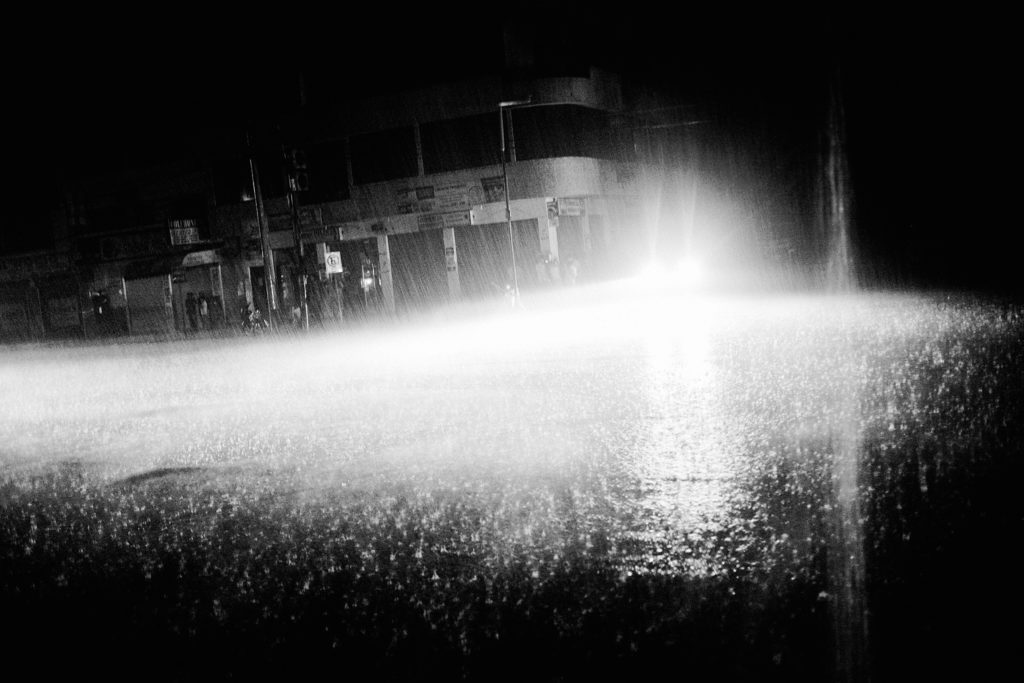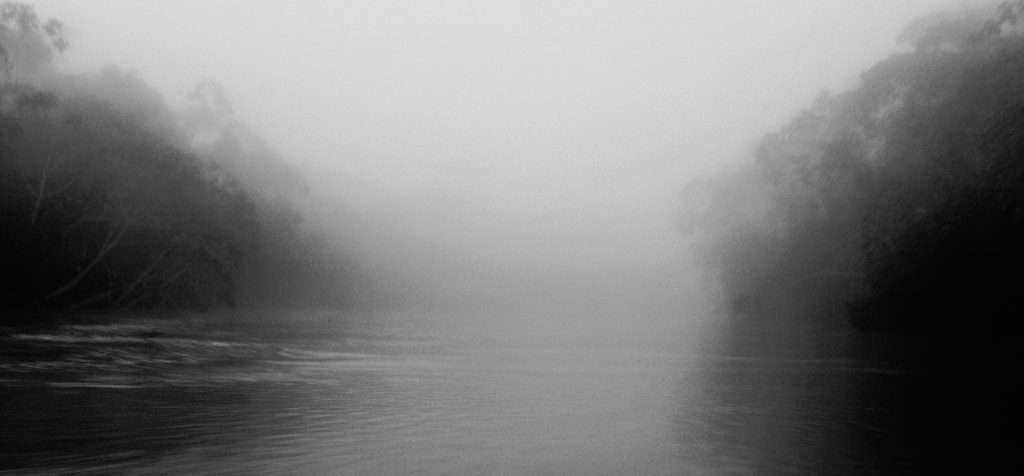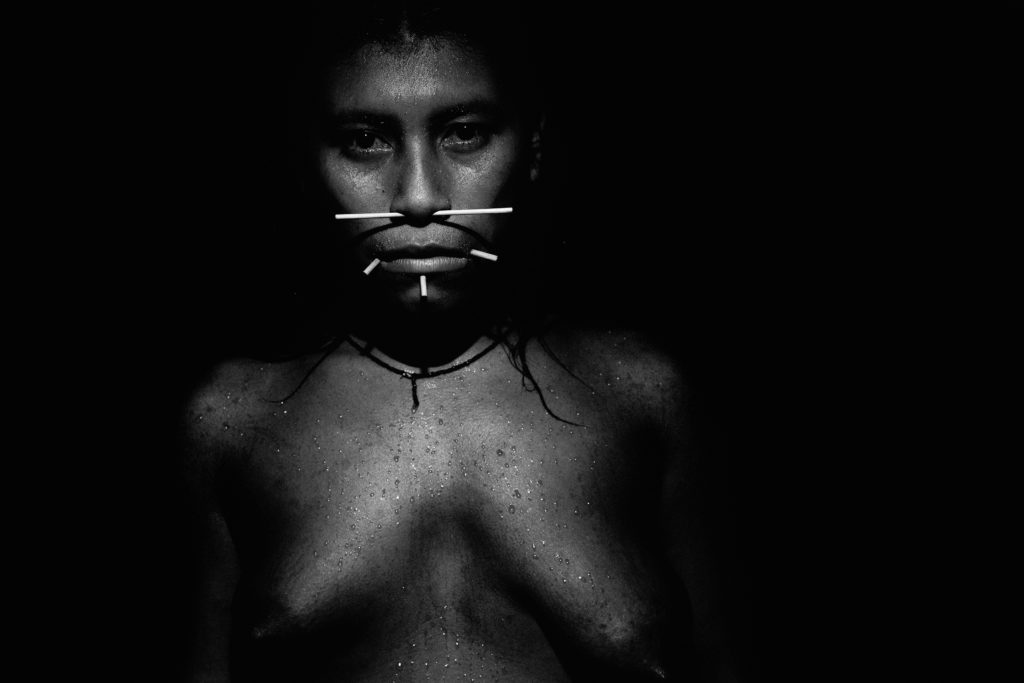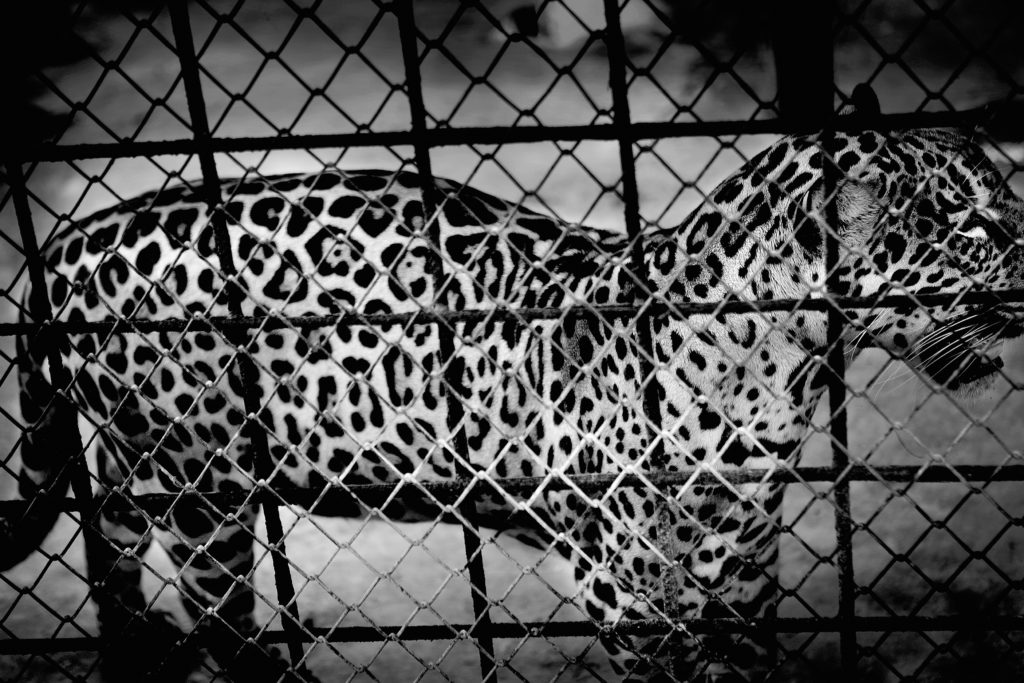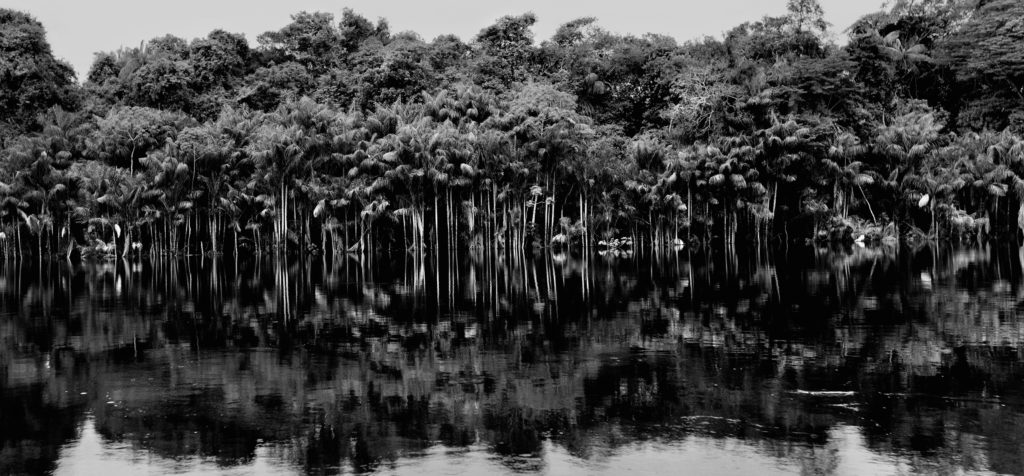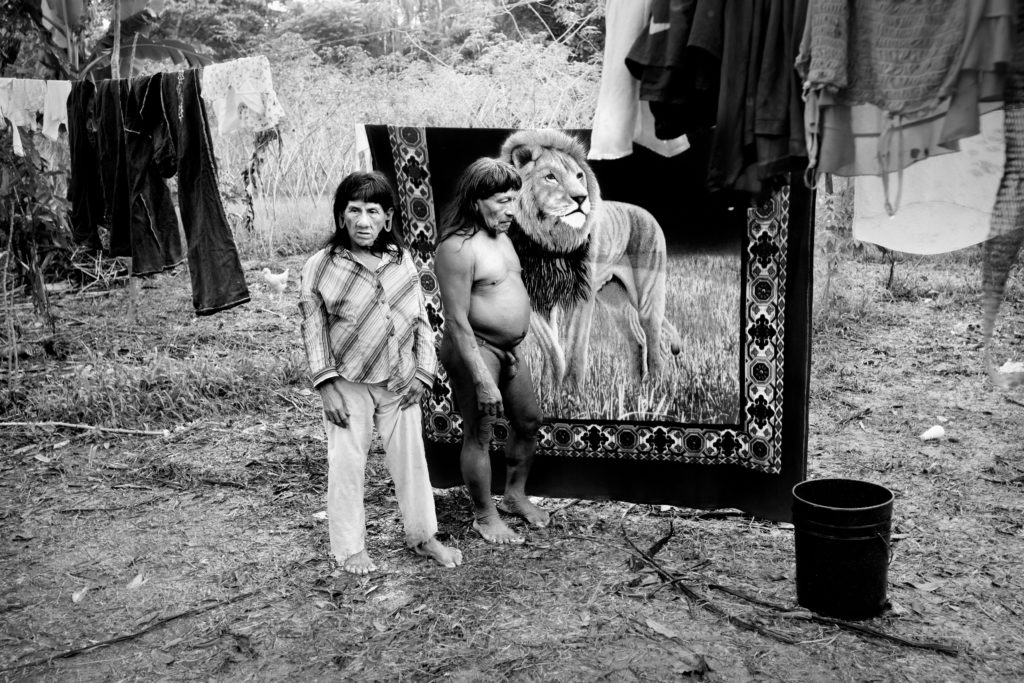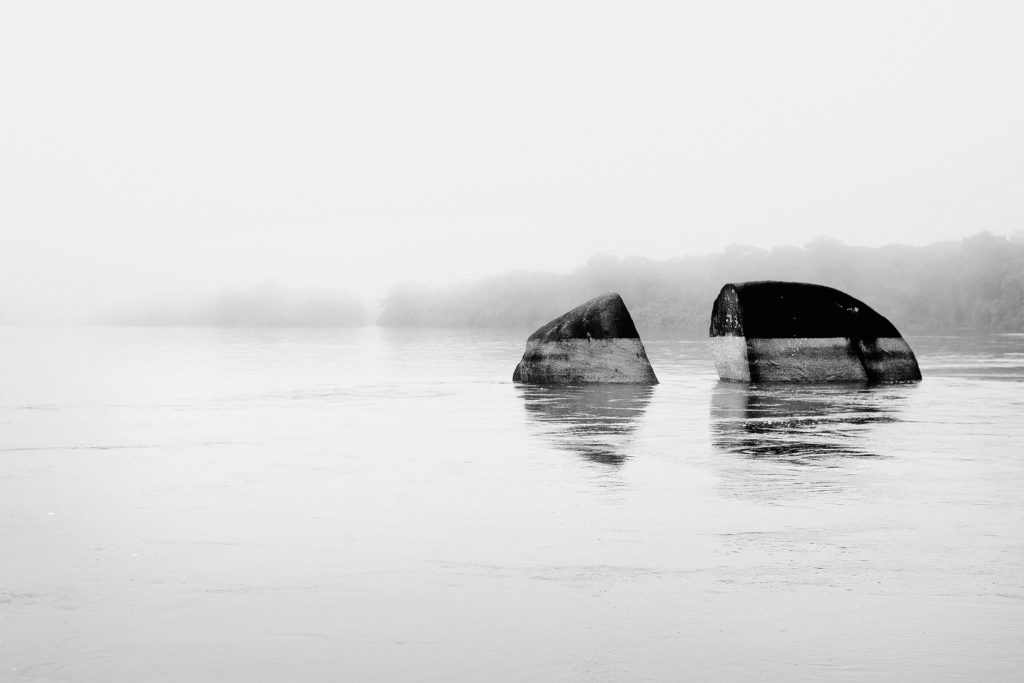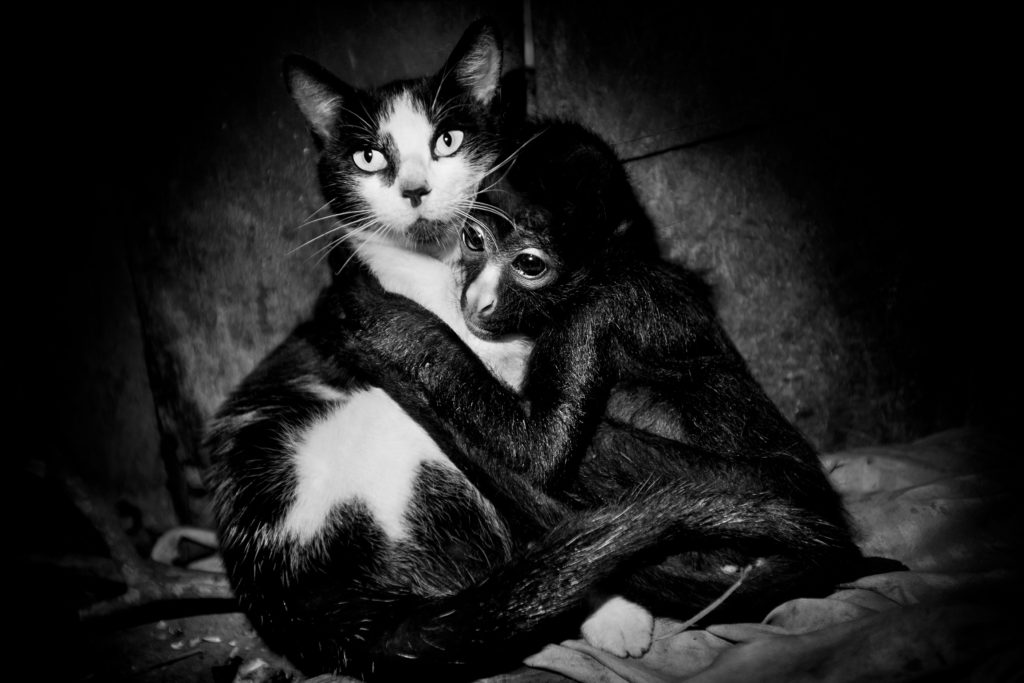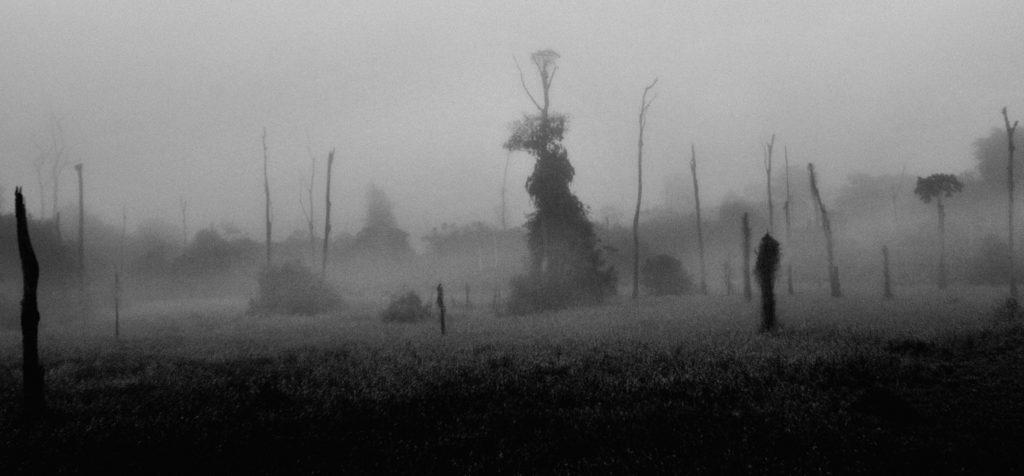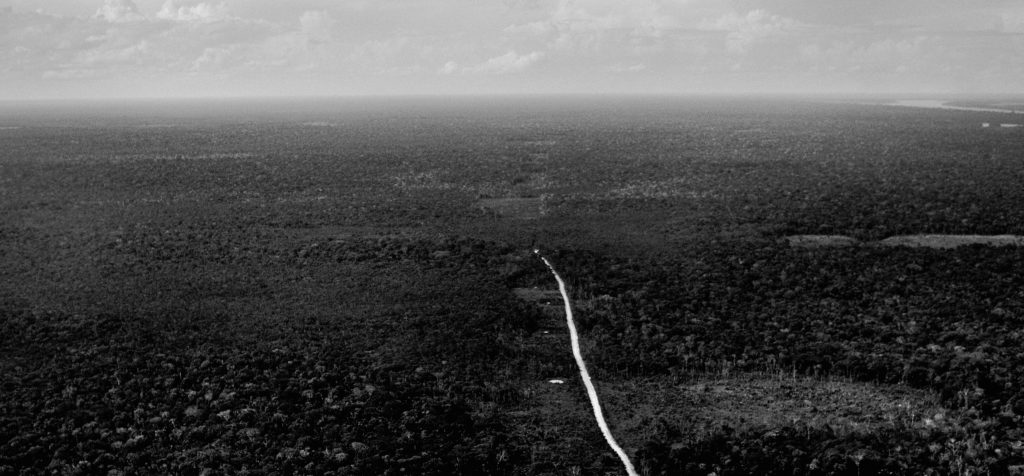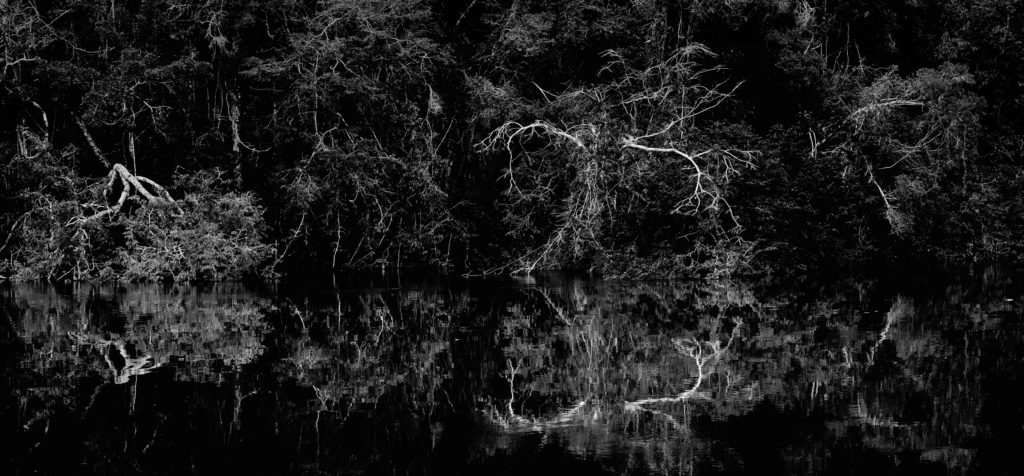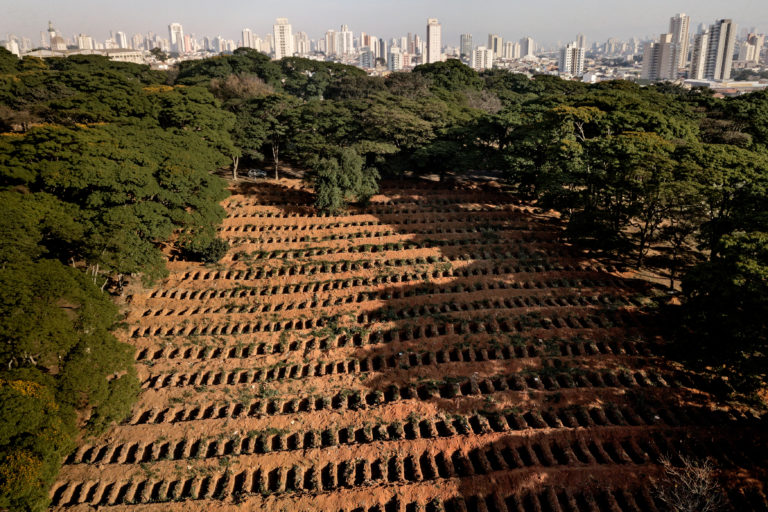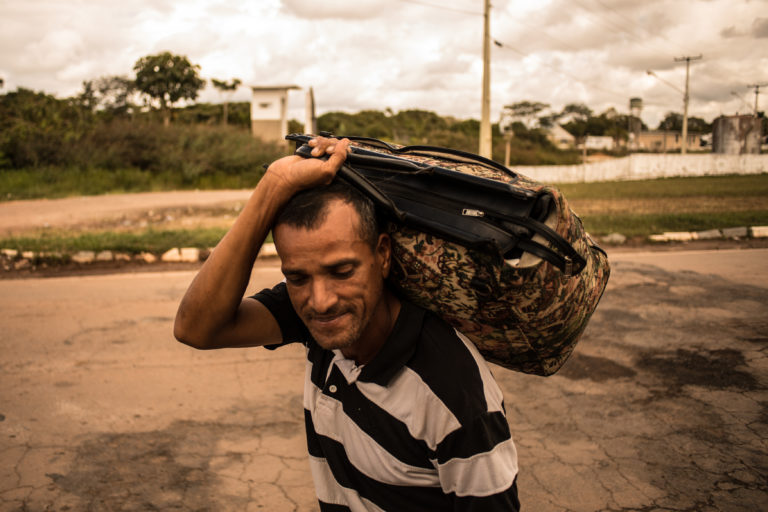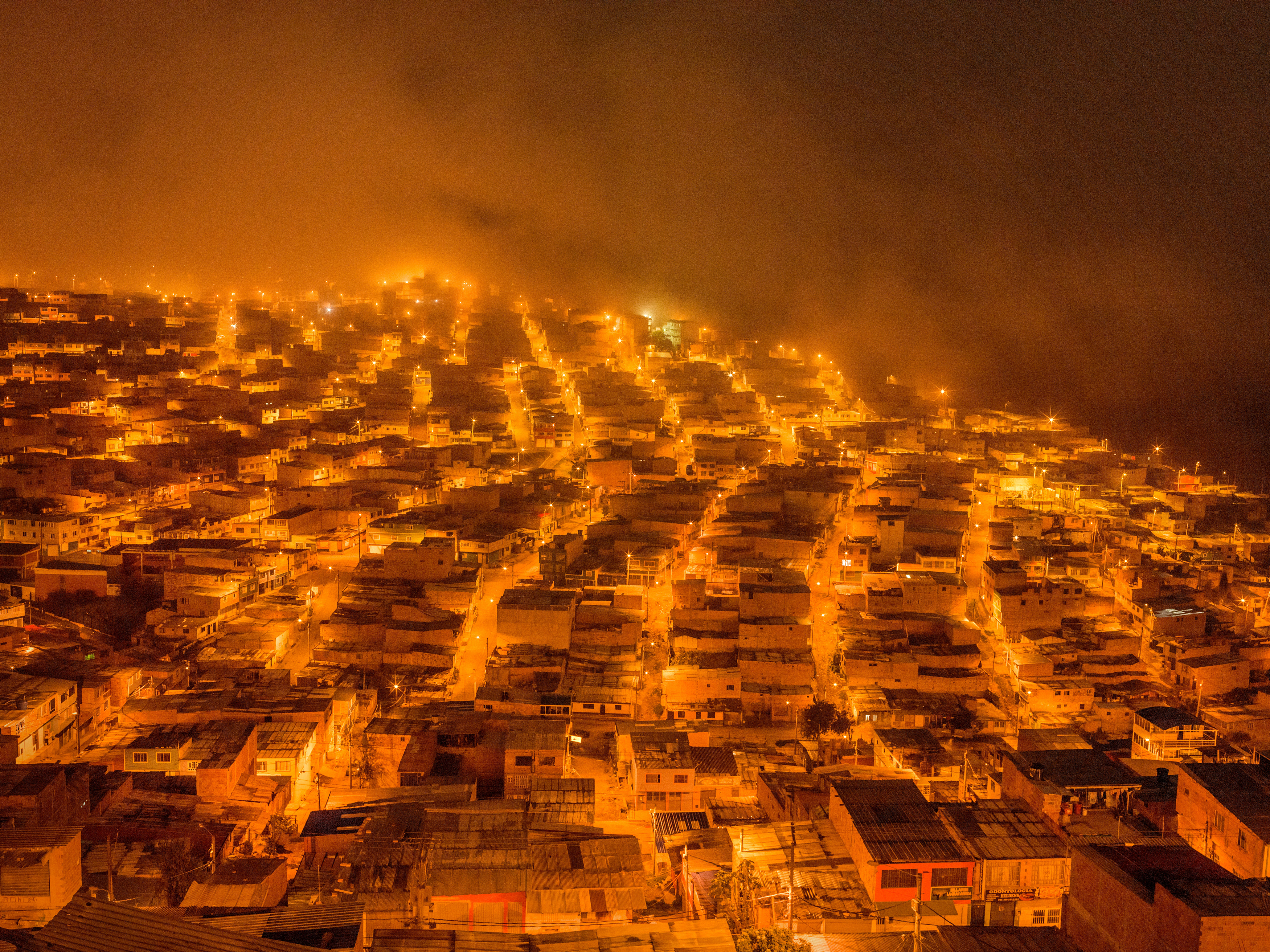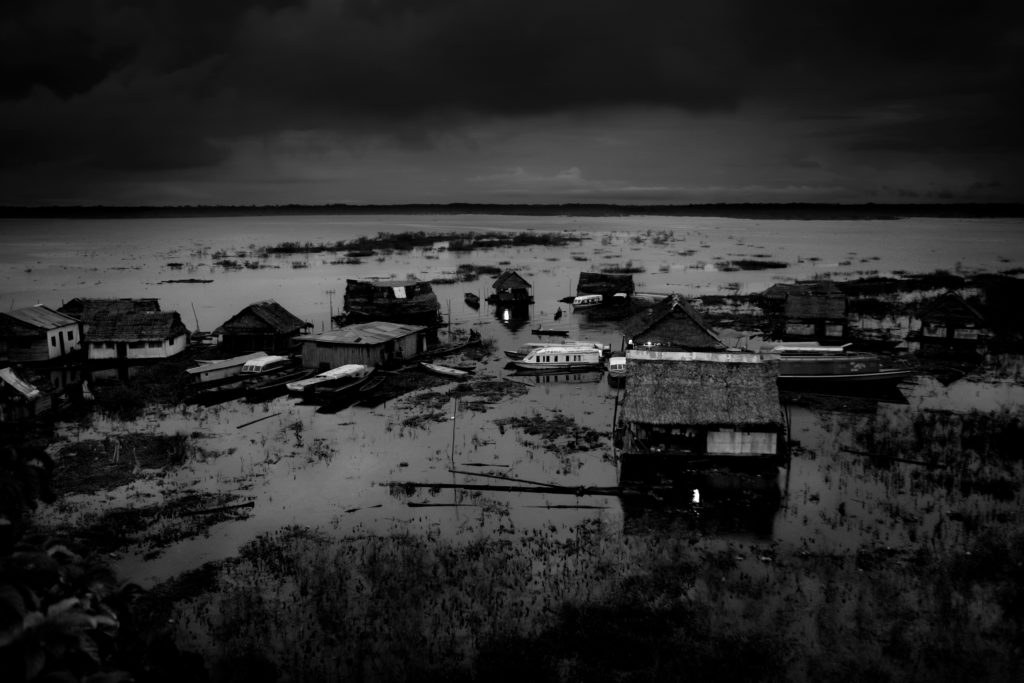
Peru, Iquitos. The biggest city in the world without road connection to the outside world. Floating houses on The Amazon-river. Just as people reach into the forest, so the forest reaches for us here on the concrete. Iquitos symbolizes the dream of a better life. An effective magnet that pulls impoverished hopefuls through the dense undergrowth of the jungle, luring them on a journey of hundreds of kilometers with empty promises of work, modernity and security. The last generation of proud and shy indigenous tribes ends here. Evanesces here. In nylon clothes and with sugar-cane booze – aguardiente – and malaria in the blood.

Peru, Iquitos. Kissing gays in the nightclub Papillion - The Butterfly. Over time Iquitos has become a place of exile for homosexuals in macho South America. This is ascribed to the heat, humidity and the fruit aguaje that reportedly renders both women and men more sensual and feminine. It started in the 1980’s when homosexuals fled from harassment, murder and violence in the deeply Catholic mountain regions of Peru. Iquitos is isolated and, as in most other jungle cities, the rules and norms of the outside world are not yet followed so zealously. The discotheque Papillon – The Butterfly – is located in a suburb, and is no larger than a garage, still, over a hundred men and transvestites have managed to squeeze themselves in here tonight. Torsos and lower bodies dripping with sweat take advantage of the tightness of the space; lips meet in the flickering disco lights and quench their thirst with Inca Kola, ice cubes and cheap aguardiente.
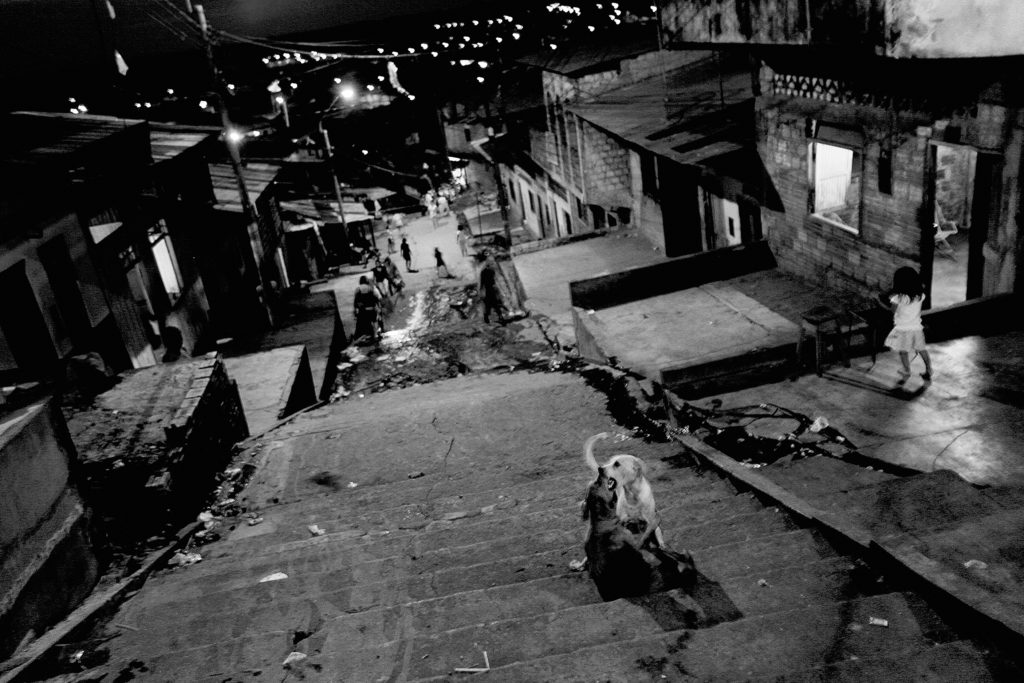
Peru, Iquitos. The biggest city in the world without road connection to the outside world. Streets of Iquitos. Just as people reach into the forest, so the forest reaches for us here on the concrete. Iquitos symbolizes the dream of a better life. An effective magnet that pulls impoverished hopefuls through the dense undergrowth of the jungle, luring them on a journey of hundreds of kilometers with empty promises of work, modernity and security. The last generation of proud and shy indigenous tribes ends here. Evanesces here. In nylon clothes and with sugar-cane booze – aguardiente – and malaria in the blood.

Peru, Iquitos. The nightclub "Las Gatas Salvajes" - The Wild Cats. Just as people reach into the forest, so the forest reaches for us here on the concrete. Iquitos symbolizes the dream of a better life. An effective magnet that pulls impoverished hopefuls through the dense undergrowth of the jungle, luring them on a journey of hundreds of kilometers with empty promises of work, modernity and security. The last generation of proud and shy indigenous tribes ends here. Evanesces here. In nylon clothes and with sugar-cane booze – aguardiente – and malaria in the blood.
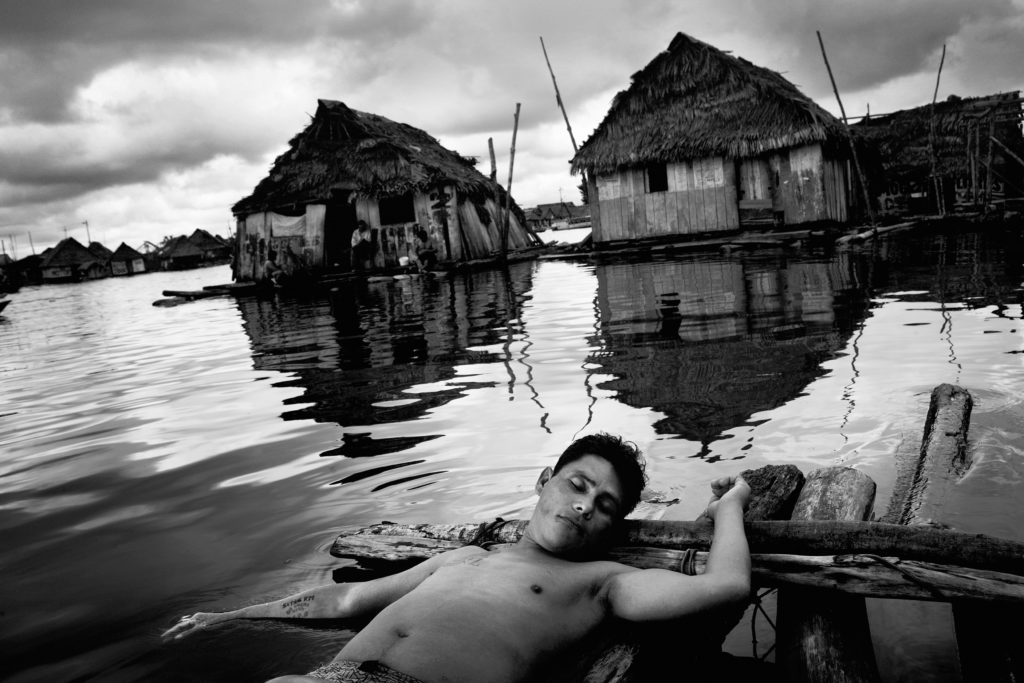
Peru, Belén Bajo. A man with hangovers is taking a nab on a raft in the Iquitos neighborhood of Belén Bajo. They call it the Venice of the Rainforest, but the Iquitos quarter Belén Bajo has more edge to it than its Italian sister. The place is a stinking slum on stilts, a community of rafts partially submerged in muddy water for four months of the year, due to the fluctuating water levels of the Amazon River.
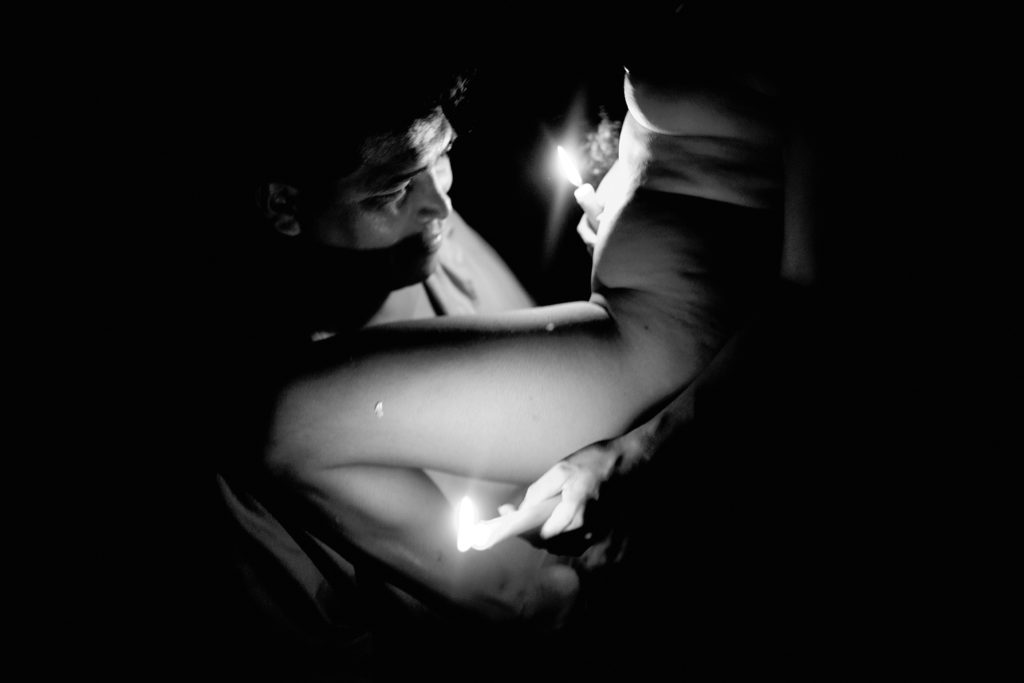
Peru, Iquitos. Lap dance with burning candles. The nightclub "Las Gatas Salvajes" - The Wild Cats. Just as people reach into the forest, so the forest reaches for us here on the concrete. Iquitos symbolizes the dream of a better life. An effective magnet that pulls impoverished hopefuls through the dense undergrowth of the jungle, luring them on a journey of hundreds of kilometers with empty promises of work, modernity and security. The last generation of proud and shy indigenous tribes ends here. Evanesces here. In nylon clothes and with sugar-cane booze – aguardiente – and malaria in the blood.
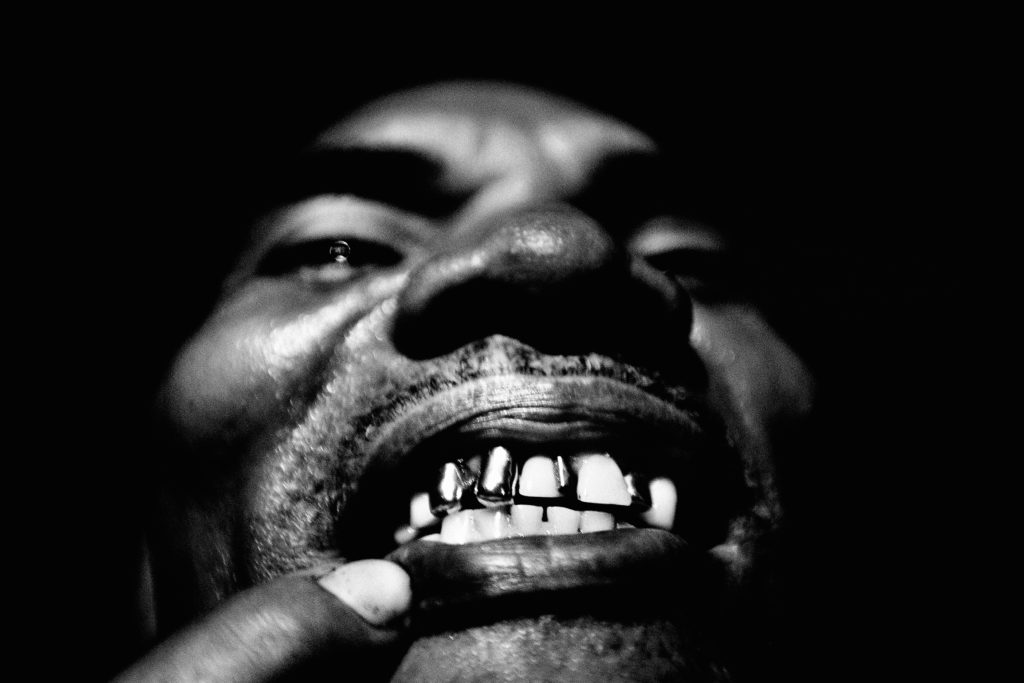
South Americas biggest illegal goldmine. Brazil, Garimpo Eldorado Do Juma. Alves do Silva is showing his gold teeth. Gold he found himself. He's been working as a garimpeiro for about 30 years. - - Eldorado do Juma was once covered by untouched rainforest; what is known as virgin rainforest. But the virgin was transformed into a mud hole of mine pits when a host of poor Brazilians arrived in the thousands. The first ones came in 2006, and since then primitive wooden houses, bars and brothels have been shooting up. At its peak, 3 to 400 kilos of gold were hosed up from the red soil every week. Back then there were approximately 8000 gold-diggers or garimpeiros as they are called in Brazil. Today, just a few years later, the output is about 10 kilos per week.
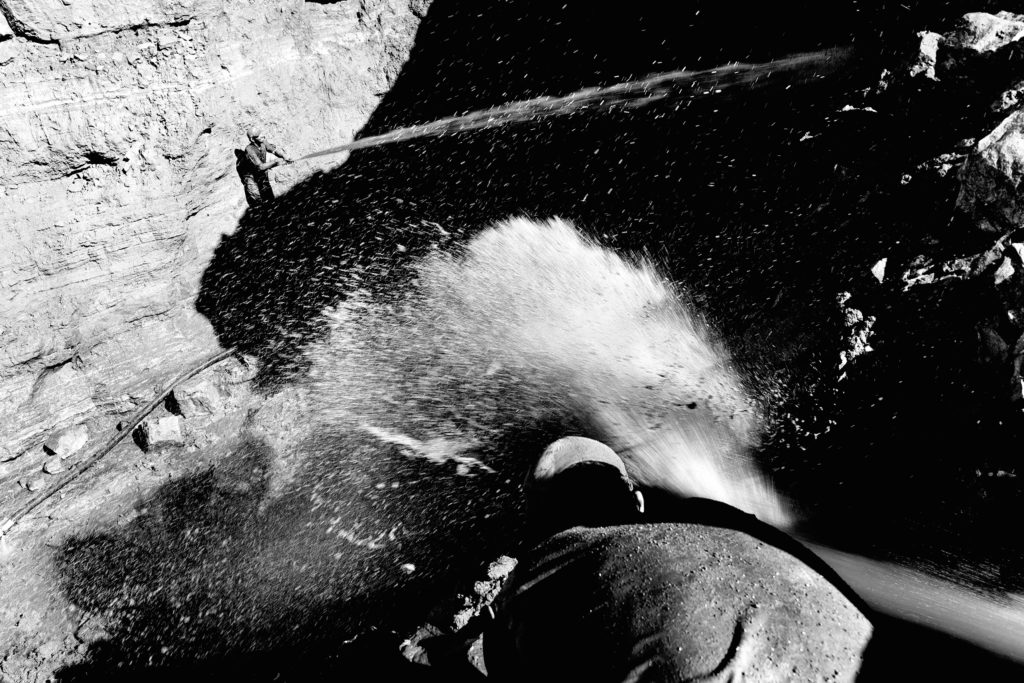
South Americas biggest illegal goldmine. Brazil, Garimpo Eldorado Do Juma. Piece by piece will every hill and rock, no matter the size, be washed apart with a fire hose until it all turns into a thick slurry. The slurry is then filtered, strained and washed with mercury. And since gold is the heaviest metal it will eventually be the only thing that's left to pick up.- - Eldorado do Juma was once covered by untouched rainforest; what is known as virgin rainforest. But the virgin was transformed into a mud hole of mine pits when a host of poor Brazilians arrived in the thousands. The first ones came in 2006, and since then primitive wooden houses, bars and brothels have been shooting up. At its peak, 3 to 400 kilos of gold were hosed up from the red soil every week. Back then there were approximately 8000 gold-diggers or garimpeiros as they are called in Brazil. Today, just a few years later, the output is about 10 kilos per week.
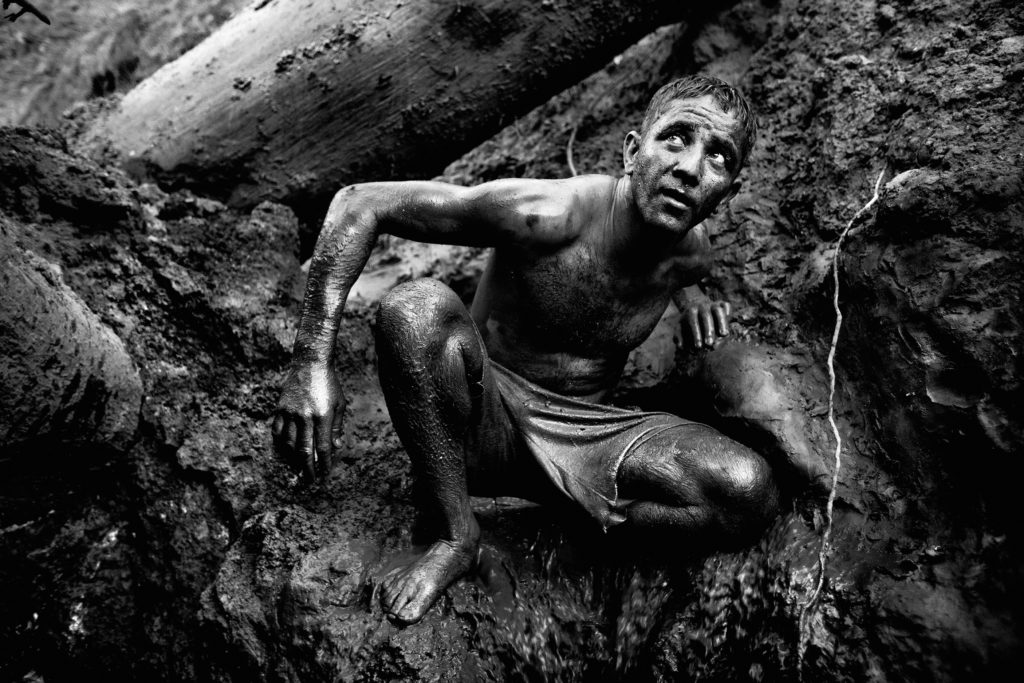
South Americas biggest illegal goldmine. Brazil, Garimpo Eldorado Do Juma. Driven by the gold fever Venicius Perfira de Sousa came to Eldorado do Juma from the neighbouring state Rondonia almost 50 days ago. At this point he still hasn't earned anything.- - Eldorado do Juma was once covered by untouched rainforest; what is known as virgin rainforest. But the virgin was transformed into a mud hole of mine pits when a host of poor Brazilians arrived in the thousands. The first ones came in 2006, and since then primitive wooden houses, bars and brothels have been shooting up. At its peak, 3 to 400 kilos of gold were hosed up from the red soil every week. Back then there were approximately 8000 gold-diggers or garimpeiros as they are called in Brazil. Today, just a few years later, the output is about 10 kilos per week.
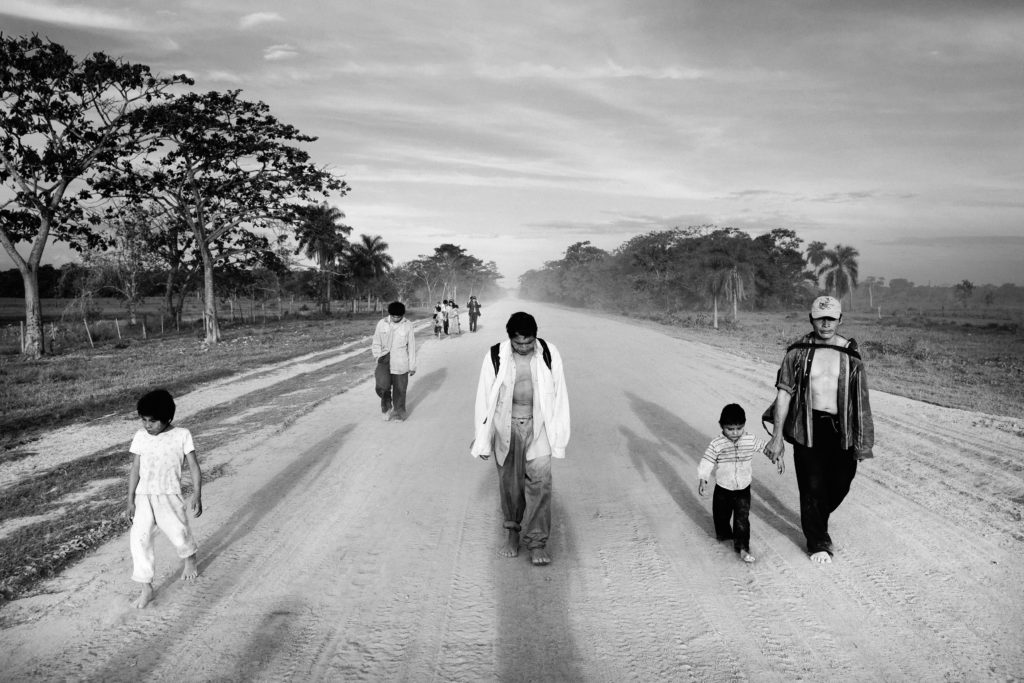
Chimanes nomades. Bolivia, Departamento del Beni. A group of Chimanes nomades consisting of five men, three women and fourteen children are living on the edge between the rainforest and the outside world. Their ancestors survived in the rainforest as gatherers and hunters, but the forest is partly gone now and the men now take small day to day work like cutting down forest or working in the fields. The group have no permanent home, and are as such still nomads like their forefathers.
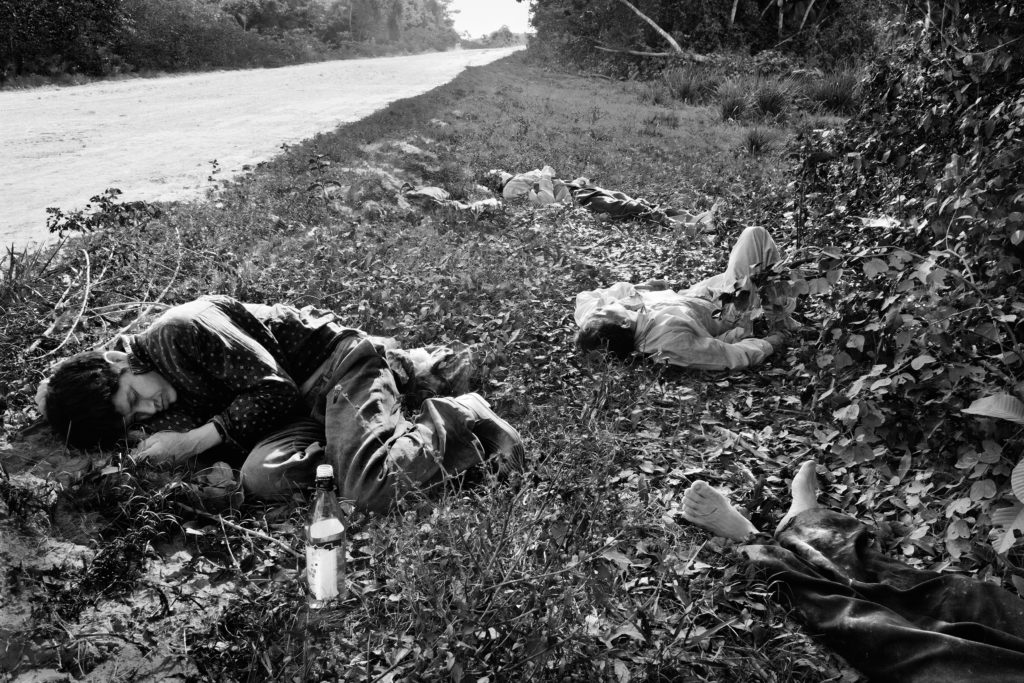
Chimanes nomades. Bolivia, Departamento del Beni. The men of the group taking a nap along the road where their now wanders. The men consumes 96% alcohol during the whole day. The group carries no tents or sheets and sleeps like this in the night as well. A group of Chimanes nomades consisting of five men, three women and fourteen children are living on the edge between the rainforest and the outside world. Their ancestors survived in the rainforest as gatherers and hunters, but the forest is partly gone now and the men now take small day to day work like cutting down forest or working in the fields. The group have no permanent home, and are as such still nomads like their forefathers.
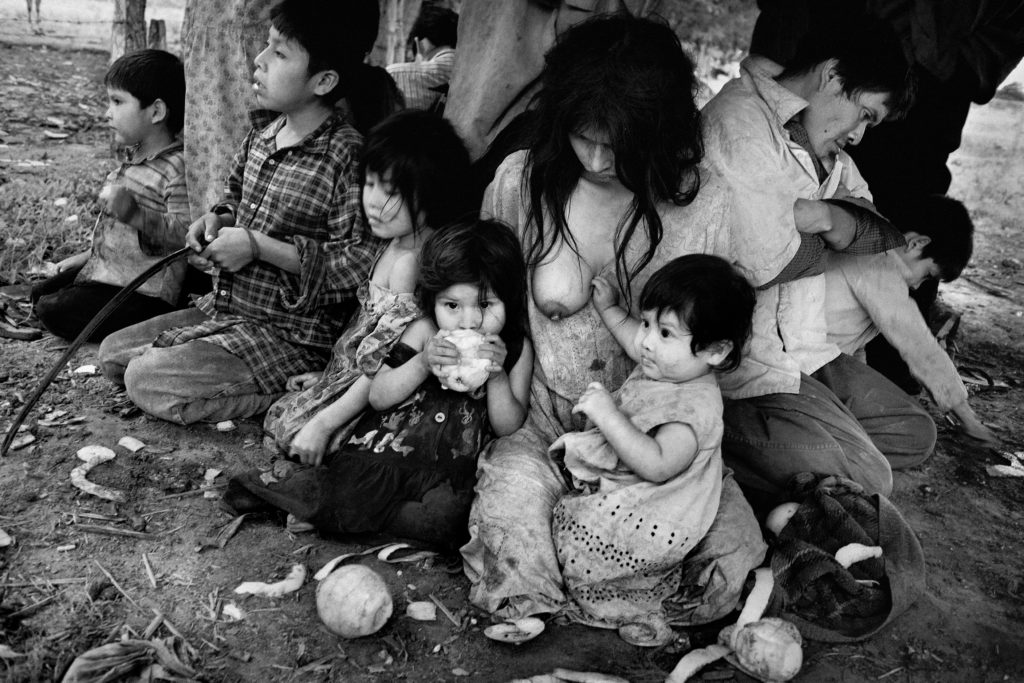
Chimanes nomades. Bolivia, Departamento del Beni. The group are taking shelter from a heavy thunder storm and are heating their bodies against a bonfire behind their backs. Luisa Oro Caris has just breast feeded her children. A group of Chimanes nomades consisting of five men, three women and fourteen children are living on the edge between the rainforest and the outside world. Their ancestors survived in the rainforest as gatherers and hunters, but the forest is partly gone now and the men now take small day to day work like cutting down forest or working in the fields. The group have no permanent home, and are as such still nomads like their forefathers.
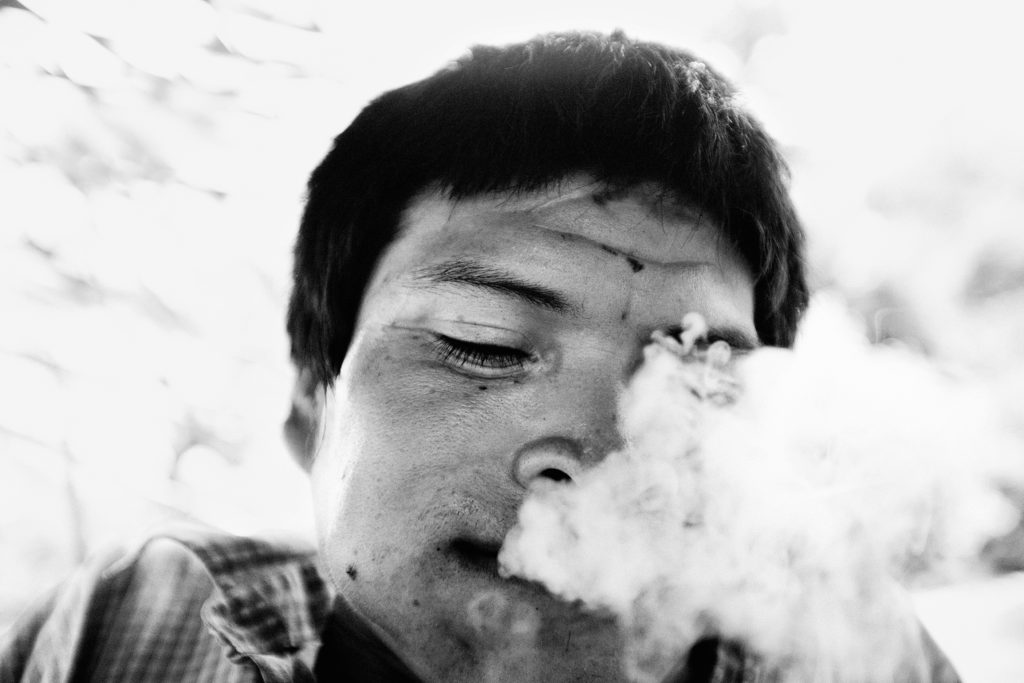
Chimanes nomades. Bolivia, Departamento del Beni. Alberto Desiderio smoking with coca leafs in his mouth. A group of Chimanes nomades consisting of five men, three women and fourteen children are living on the edge between the rainforest and the outside world. Their ancestors survived in the rainforest as gatherers and hunters, but the forest is partly gone now and the men now take small day to day work like cutting down forest or working in the fields. The group have no permanent home, and are as such still nomads like their forefathers.
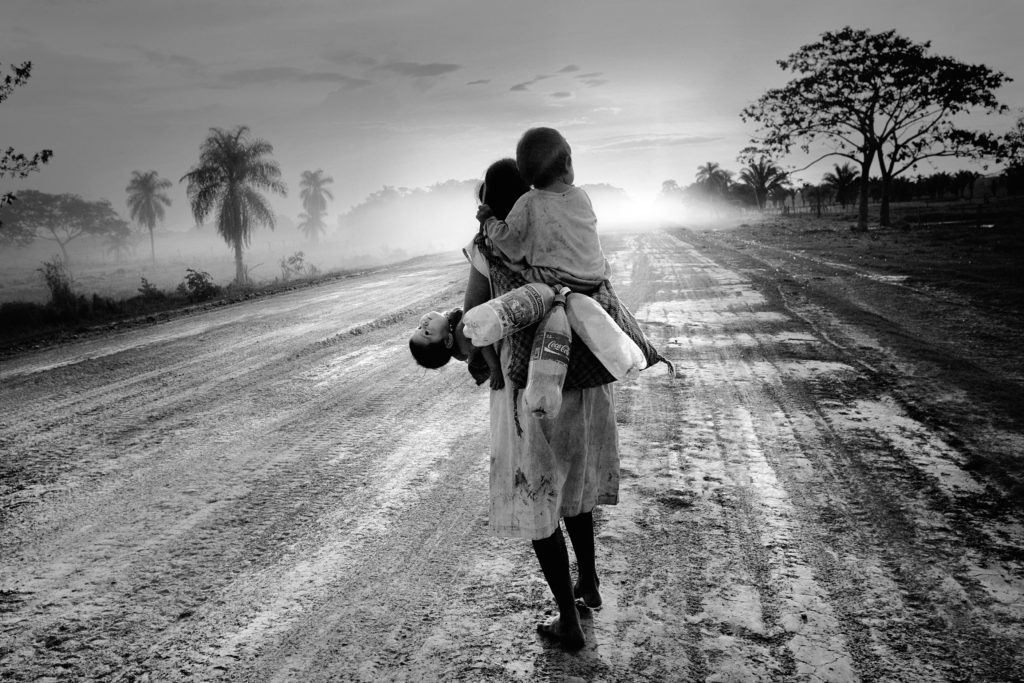
Chimanes nomades. Bolivia, Departamento del Beni. Luisa Oro Caris’ bare feet force her body forwards with firm steps in a heavy rhythm while the two youngest children sleep soundly on her body, her few-month-old son in a sling on her back and the slightly heavier Susana in Luisa’s arms. The dirt road seems endless. A few trucks and busses have driven by us, but who in these parts stops to take twenty-two dirty and underfed nomadic Indians on board? A group of Chimanes nomades consisting of five men, three women and fourteen children are living on the edge between the rainforest and the outside world. Their ancestors survived in the rainforest as gatherers and hunters, but the forest is partly gone now and the men now take small day to day work like cutting down forest or working in the fields. The group have no permanent home, and are as such still nomads like their forefathers.
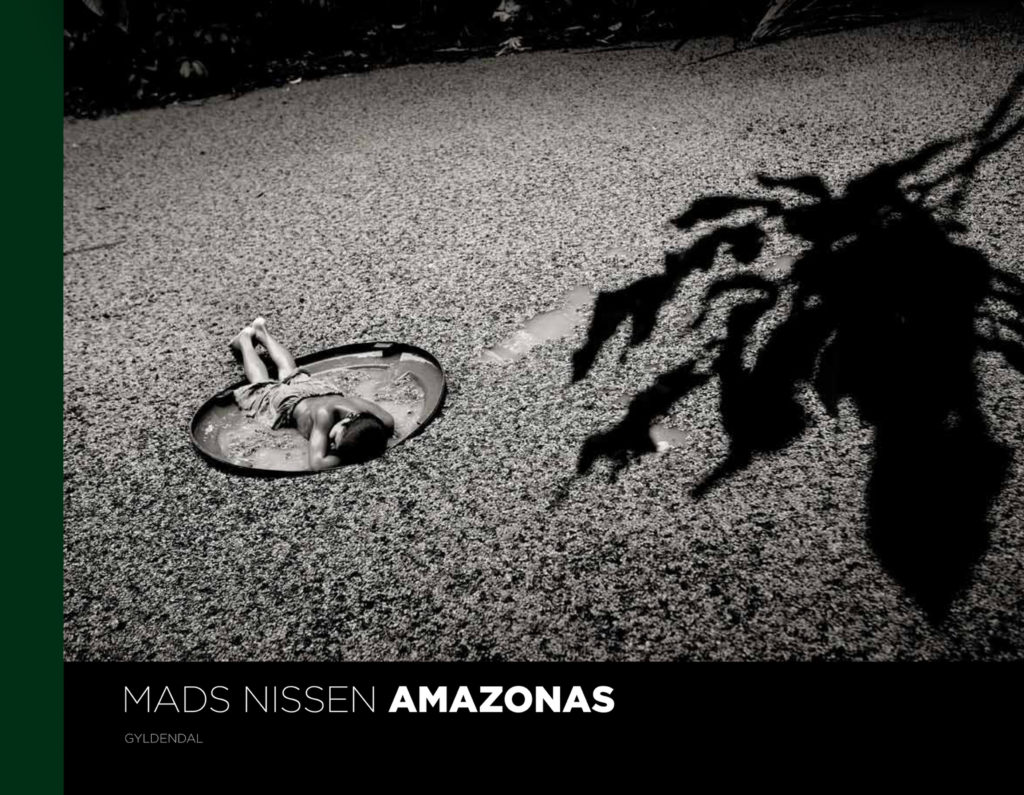
Mads Nissen - AMAZONAS - Behind the Scenes. So here's the solution that prevented us from cropping the cover-picture (too much) The black bar in the bottom makes it more clear and clean. The green area on the left will be fabric. A color carefully picked and that suits the first pages green page when you open the book.
Amazonas is a raw and lyrical journey into the world’s largest rainforest. The uncanny wilderness, where gold-diggers, warriors, homosexuals in exile and isolated indigenous tribes collide on the threshold between nature and culture, instinct and reason, our origin and our future.
Amazonas is my personal encounter with the rainforest and the people living there. For more than six years and on month-long trips, I’ve been working on this personal project from which I here show you a selection.
Amazonas is dedicated to the place that enthralled my heart. To the Amazon I admire, fear and fear for.


